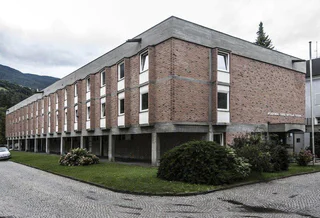
1/4
Josef Freinademetz Parish Church
Bressanone dintorni/Brixen Umland, Brixen/Bressanone, Brixen/Bressanone and environs

1/4
Bressanone dintorni/Brixen Umland, Brixen/Bressanone, Brixen/Bressanone and environs

1/8
Fortezza/Franzensfeste, Franzensfeste/Fortezza, Brixen/Bressanone and environs

1/6
Bressanone dintorni/Brixen Umland, Brixen/Bressanone, Brixen/Bressanone and environs

1/5
Bressanone città/Brixen Stadt, Brixen/Bressanone, Brixen/Bressanone and environs

1/8
Bressanone città/Brixen Stadt, Brixen/Bressanone, Brixen/Bressanone and environs

1/4
S. Andrea/St. Andrä, Brixen/Bressanone, Brixen/Bressanone and environs

1/6
Monteponente/Pfeffersberg, Brixen/Bressanone, Brixen/Bressanone and environs

1/5
S. Andrea/St. Andrä, Brixen/Bressanone, Brixen/Bressanone and environs

1/4
Albes/Albeins, Brixen/Bressanone, Brixen/Bressanone and environs

1/4
Bressanone città/Brixen Stadt, Brixen/Bressanone, Brixen/Bressanone and environs

1/2
Bressanone città/Brixen Stadt, Brixen/Bressanone, Brixen/Bressanone and environs

1/5
Bressanone città/Brixen Stadt, Brixen/Bressanone, Brixen/Bressanone and environs

1/6
Bressanone città/Brixen Stadt, Brixen/Bressanone, Brixen/Bressanone and environs

1/4
Bressanone città/Brixen Stadt, Brixen/Bressanone, Brixen/Bressanone and environs

1/2
Aica/Aicha, Franzensfeste/Fortezza, Brixen/Bressanone and environs

1/4
Monteponente/Pfeffersberg, Brixen/Bressanone, Brixen/Bressanone and environs

1/4
Varna/Vahrn, Vahrn/Varna, Brixen/Bressanone and environs

1/2
Bressanone città/Brixen Stadt, Brixen/Bressanone, Brixen/Bressanone and environs

1/4
S. Andrea/St. Andrä, Brixen/Bressanone, Brixen/Bressanone and environs

1/7
Bressanone dintorni/Brixen Umland, Brixen/Bressanone, Brixen/Bressanone and environs

1/6
Novacella/Neustift, Vahrn/Varna, Brixen/Bressanone and environs

1/2
Bressanone città/Brixen Stadt, Brixen/Bressanone, Brixen/Bressanone and environs

1/7
Bressanone città/Brixen Stadt, Brixen/Bressanone, Brixen/Bressanone and environs

1/7
Bressanone città/Brixen Stadt, Brixen/Bressanone, Brixen/Bressanone and environs

1/2
Bressanone città/Brixen Stadt, Brixen/Bressanone, Brixen/Bressanone and environs

Bressanone città/Brixen Stadt, Brixen/Bressanone, Brixen/Bressanone and environs

1/3
Bressanone città/Brixen Stadt, Brixen/Bressanone, Brixen/Bressanone and environs

Monteponente/Pfeffersberg, Brixen/Bressanone, Brixen/Bressanone and environs

1/6
Bressanone città/Brixen Stadt, Brixen/Bressanone, Brixen/Bressanone and environs

S. Andrea/St. Andrä, Brixen/Bressanone, Brixen/Bressanone and environs